2014 Most Endangered
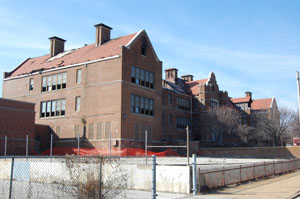 |
Hempstead School, 5872 Minerva
In May of 2014, a fire swept through the upper floors of Hempstead School in the Hamilton Heights neighborhood of north St. Louis. Vacant since 2003, the William Ittner school had been listed in the National Register of Historic Places in 2007, the year it turned 100 years old. Despite efforts by SLPS Real Estate Director Walker Gaffney and Landmarks Association to find a new owner for the building (structurally sound, but severely damaged by the fire) so far nobody has stepped forward with a viable plan for reuse. Indeed Mr. Gaffney indicated that he thought the SLPS could be convinced to essentially give the property away to a qualified non-profit organization with the means to repurpose it to no avail. Now it seems that the building is considered to be a liability for the school district and demolition may soon be proposed.
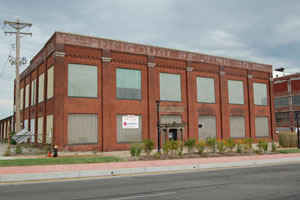 |
Missouri Belting Co., 1021 S. Grand
The long expected application for a demolition permit for the Missouri Belting Company building on South Grand (designed by Otto Wilhelmi and constructed in 1911) was heard and denied by the St. Louis Preservation Board in December of 2014. While several years ago, the threat to the building was assumed to be associated with St. Louis University's now abandoned plan for an ambulatory care center on the site of the wrecked Pevely Dairy plant, it seems now that the owner (not SLU) wants to dispose of the building with no plan for the site. Reason given: minor damage to the south wall caused by a fire at an adjacent building in 2009. Considering that the owner's actions to date indicate no interest in maintaining, repairing, or selling the building, it is anticipated that it will be left to deteriorate.
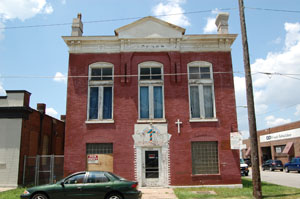 |
Church of the New Jerusalem, 1629 N. 14th Street
Constructed in 1859 by the Swedeborgian Church of the New Jerusalem, this little church is a contributing building in the rapidly eroding Mullanphy Historic District on St. Louis' near north side. When it was created by Landmarks Association in 1983, the Mullanphy District was noted as an outstanding example of 19th century vernacular residential architecture surrounding substantial institutional buildings such as the Mullanphy Emigrant Home and the Church of the New Jerusalem (which had been converted into the Nord St. Louis Bundeschor or People's Choir in 1878). Today, much of the context for the emigrant home and the church is gone and the church's hand-pressed brick walls are failing due to water infiltration. The church's current owner is interested in repairing and using the building, but lacks sufficient funds for rehabilitation.
North Riverfront Industrial Historic District, the North Broadway Wholesale and Warehouse National Register Districts, St. Louis Stamping Company buildings.
Since plans were announced in early January for enormous new parking lots and also a stadium for the St. Louis Rams, an existential threat to major National Register resources on St. Louis' north riverfront has emerged. The plan as proposed would effectively annihilate two historic districts (and likely result in the remaining buildings being removed from the National Register for lack of context) as well as level the NR listed St. Louis Stamping Company buildings. Leaving all issues of whether the Rams should stay or go, or continue to use the Jones Dome aside, the waste and utter contempt for the useful and attractive historic buildings (including the Hammond Apartments in the 1871 St. Louis Stamping Company Building which won a Landmarks Most Enhanced Award in 2014 for excellence in historic rehabilitation) in the project area demonstrated by the proposal is outrageous.
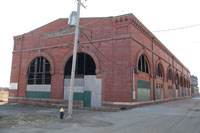 | 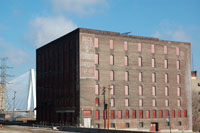 |
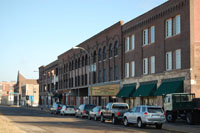 | 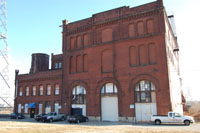 |
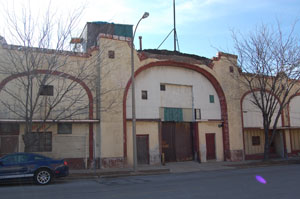 |
The St. Louis Palladium (aka Plantation Club), 3618 Enright. After being recognized by National Trust for Historic Preservation in 2014, which named it among the 11 most significant endangered buildings in the country, the St. Louis Palladium continues to languish. Threats from a proposed expansion of the John Cochran VA Hospital and deferred maintenance continue to haunt the future of this formerly prominent jazz club where the likes of Nat King Cole and Ella Fitzgerald once graced the stage. Arguably the last building in the thriving Grand Center Arts District still in need of rehabilitation, the Palladium's association with the early 20th century jazz scene in St. Louis perhaps could serve as an inspiration for a future use.
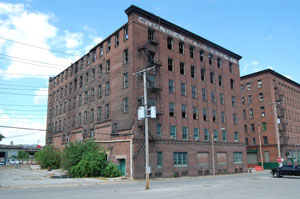 |
Crunden-Martin Manufacturing, 757 s. 2nd Street. Since a catastrophic fire in December of 2011 burned through the roof of this enormous warehouse building, the interior wooden structural system has been exposed to the elements. The building is currently in the same situation that resulted in the destabilization and eventual demolition of Cupples 7, and unfortunately appears to be headed down the same path. Despite the fact that the current condition of the building is in violation of city code, we are not aware of any efforts that have been made to repair the damaged roof or otherwise mitigate the deterioration.
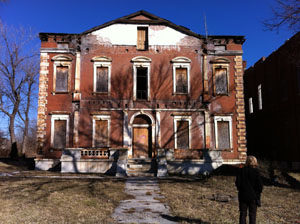 |
James Clemens Jr. House, 1849 Cass Avenue. This formerly grand mansion designed by Patrick Walsh for James Clemens Jr. in 1858 bears little resemblance to the home where a ceremonial signing of two aldermanic bills in support of developer Paul McKee's North Side Regeneration Plan took place in 2009. Every year there is less and less to save of the Clemen's Mansion and its associated chapel. Open to vandals and the elements for years, the buildings no longer appear to be long for this world.
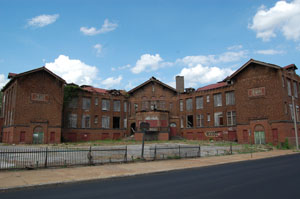 |
Carr School, 1421 Carr. Perhaps William Ittner's most beloved and interesting school, Carr has been abandoned for 31 years and shows it. While the building's angled wings still lovingly embrace the projecting kindergarten bay and Henry Chapman Mercer's mosaics still beautifully depict children at play, more than half of Carr's roof is gone and trees strive skyward from its ruined classrooms to escape the gloom within. Another building located within the Northside Regeneration footprint, Paul McKee offered a glimmer of hope for Carr in October of 2013 in testimony to the St. Louis Board of Aldermen when he stated that he had plans to put a technology incubator into the school, and new renderings released by Northside in January of 2015 show the building intact at the center of the "Carrtex" technology district
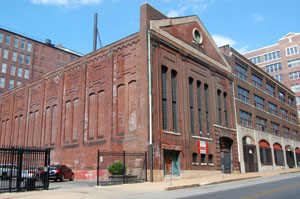 |
1711 Locust. This building was constructed in 1903 as a power substation for the St. Louis Transit Company, one of the major operators of the streetcar system. The architect is unknown, but Martin Arhelger was the contractor. The building was recognized as endangered in 2010 due to partial failure of its roof. The same building-killing process of water infiltration continues to erode 1711 Locust with telltale signs of water problems most obvious near the roofline of the west wall. With multiple examples of how a power house such as this can be reused around town, it would be a shame to lose such beautiful and versatile building.
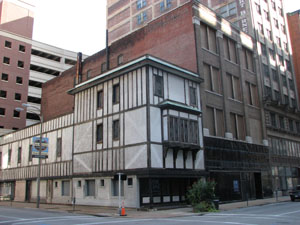 |
919 and 923 Locust. In August of 2013, a redevelopment plan was adopted which blighted and cleared the way for the demolition of the two buildings at the northeast corner of 10th and Locust. The destruction of these two buildings has been called a necessity by their owners, who wish to redevelop the building to the east, the former Scruggs Vandervoort Barney Annex at 917. The small corner building, beneath its late 20thcentury Tudor Revival cladding, may have portions that predate 1875. From 1912-1958, it housed the world-renowned Noonan-Kocian Art Company. The larger building at 923 (constructed in 1916 and designed by Nat Abrahams) was the longtime home of Leacock Sporting Goods. If demolished, the space the buildings presently occupy would be filled with some combination of landscaping, a semicircular drive, and modest lobby/drop off area. The buildings anchor one of the last fully intact four-way intersections left in the central business district and 919 in particular is the kind of small-scale, but highly adaptable building that downtown desperately needs more of.
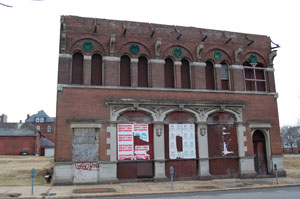 |
Henry L. Wolfner Memorial Library for the Blind, 3842-44 Olive Street
The National Register listed Wolfner Library Complex consists of two buildings constructed in 1898 and 1904 by Shepley, Rutan & Coolidge and Mauran, Russell & Garden respectively. Originally built as the Lindell Exchange for the Bell Telephone Company, the buildings were repurposed in 1938 and put into service as the first "stand alone" library for blind in the United States. By 1940 only the Library of Congress exceeded Wolfner in its collections and circulation of Braille and "talking" books. The facility closed at this location in 1971 and merged with the Missouri State Library in Jefferson City in 1985. Located on a block of Olive adjacent to Grand Center and St. Louis University, decades of arbitrary demolition have rendered the area desolate and the library virtually devoid of context. Currently neglected and condemned, the Wolfner library, once a symbol of St. Louis' progressive nature, appears to be on the verge of disappearing.
